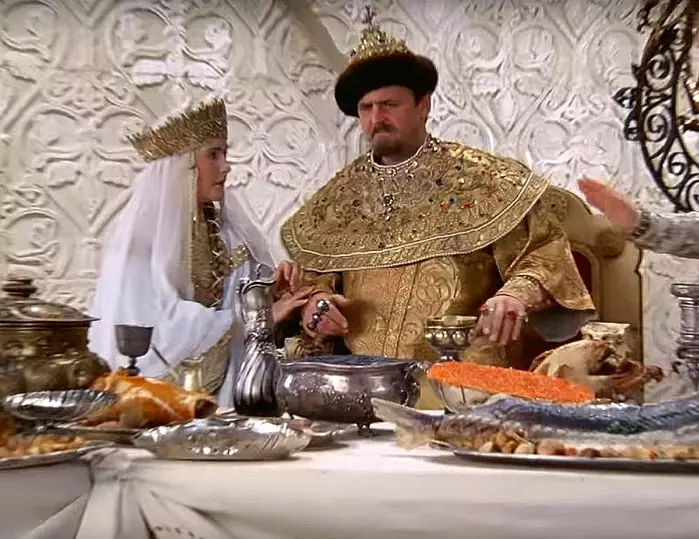
Usually, medieval food is considered fresh and inexpressive. In the end, there was no chocolate, potatoes or tomatoes (all this was brought from America). But some medieval products were so highly seasoned that today they would be considered unpleasant (for example, at that time people loved to add pink water or lavender into their dishes).
Naturally, at the time of the Middle Ages, the kings and their courtiers were faced. And it is unlikely that you can find a more generous king than Richard II, which was known throughout Europe with his wealth.Therefore, we were lucky that the recipe book written by his best chefs was preserved to the present day. In "Food preparation methods" ("FORME OF CURY") contains as many as 196 recipes, and today it will be about some of them.
1 Fungusy
This recipe under No. 10 in "Food preparation methods" describes how the mushrooms need to be prepared. ("Fungus" is the medieval name of mushrooms). At first, everything seems to be familiar - leeks need to finely cut and add to the broth, and also put a little saffron for color. However, the recipe also appears "Fort Powder". It was a well-known mixture of spices in the Middle Ages, very similar to modern Garam Masala. Fort powder was usually made from pepper and ginger or cinnamon. However, since this dish was done for the king, probably a more complex mixture of seasonings was used (most likely with clove or saffron).
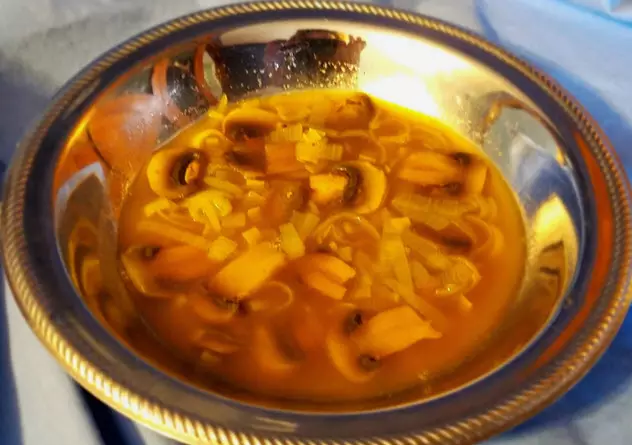
You can try to cook at home the following mixture for mushrooms: mix 28 grams (1 ounce) cinnamon, 28 grams of ginger, 28 grams of black pepper, 7 grams of saffron and 3.5 grams of carnations. Pepper was the most common spice in medieval Europe, he was followed by cinnamon, ginger and carnation. Mushrooms were cheap and widespread in medieval England. So this dish was quite affordable, although not for everyone.
2 Cormar
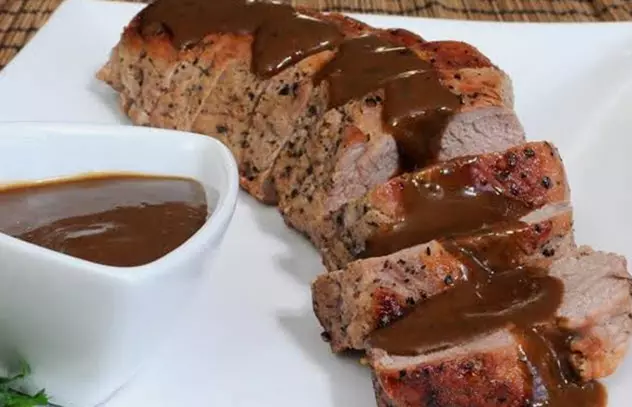
Sometimes the kings needed to amaze her guests, and to do it the best way - it was a large piece of pork in a thick sauce on the table. "Cormar", recipe number 53, was the main dish at the royal holidays. Red wine and pork Korean stand even in modern standards, and exotic spices (coriander and cumin) were then worth a fortune. To try this dish today, you need to make a sauce from red wine, ground pepper, garlic, coriander, cinema and salt, and then fry pork meat in it. At the end you need to add sauce to the broth and serve on the table.
3 Toasts
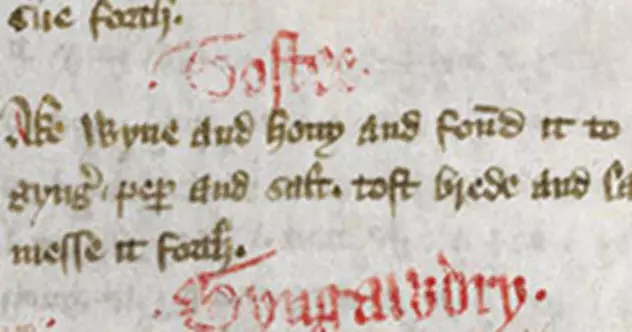
Yes that's right. Personal Culinary Book of Richard II contains a recipe for the preparation of a tooth - or "the testes", as it was called then. However, if today they filed a similar in a cafe, for sure, the thought would have come to mind that the cook would be mistaken. This recipe number 93 is more like a jam on the toast, than on a modern toast. It is necessary to mix red wine and honey in a saucepan, then add ground ginger, salt and pepper and boil until it thickens. The resulting mass is flashed on toasted bread. You can also cut a little fresh ginger and sprinkle toast on top.
4 Pain Ragun
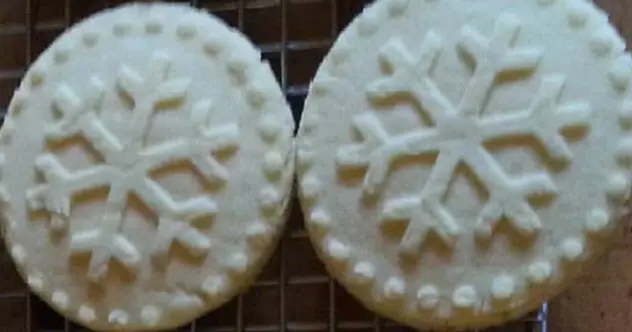
If someone ever wondered what the medieval candy was similar to, then she. Pain Ragun, in fact, is an Irisian in a medieval style, although this delicacy was served with meat or fish, and not as a snack or dessert. It is necessary to mix a little honey, sugar and water and cook it all on slow heat, then add ground ginger. The recipe actually encourages the cooks to macked into the mixture of the finger. If Paj Ragun hung up, dripping off his finger, then he is ready. After that, in the medieval "Irisk" you need to add cedar nuts and stir until the mixture thickens. At the end, the mixture is folded into the molds of the loath or cupcakes and leave it so much.
5 Pashota Eggs
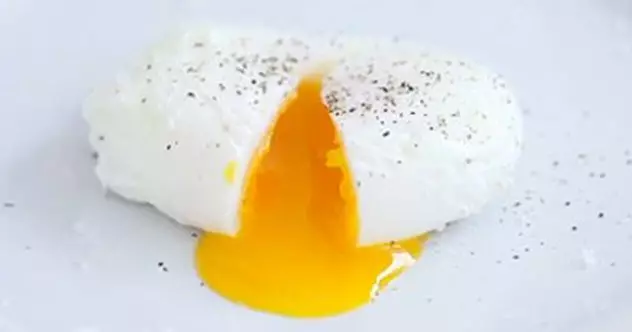
The medieval method of cooking eggs-pashot (or "so on", as they called then) was almost the same as today. It was necessary to take eggs and break them into boiling hot water. They were served on banquets on a plate along with specially cooked sauce. In Recipe No. 90, this sauce is described, which is not similar to any modern. You need to beat together two egg yolks, sugar, saffron, ginger and salt. Add milk and cook until it thickens, not letting it boil.
6 Verde sauce
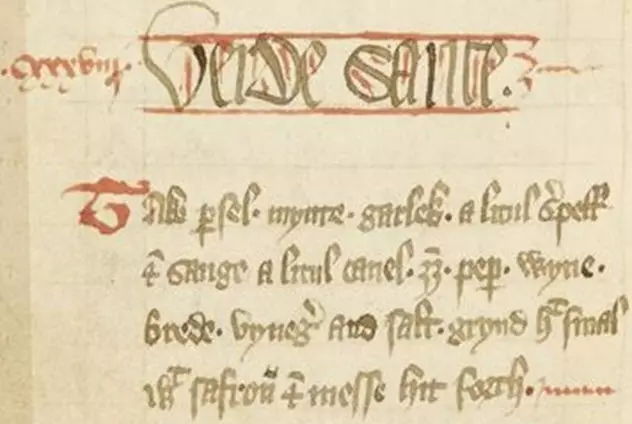
Today everyone knows Salsa Verde as a key component of modern Mediterranean cuisine. It seems that Richard II was also a fan of this popular sauce, since the "FORME OF CURY" contains a recipe specifically dedicated to this sauce - recipe number 140. This medieval version of Salsa Verde consists of parsley, mint, garlic, thyme, sage, Cinnamon, ginger, pepper, wines, breadcrumbs, vinegar and salts that mixed fresh.
7 pancakes
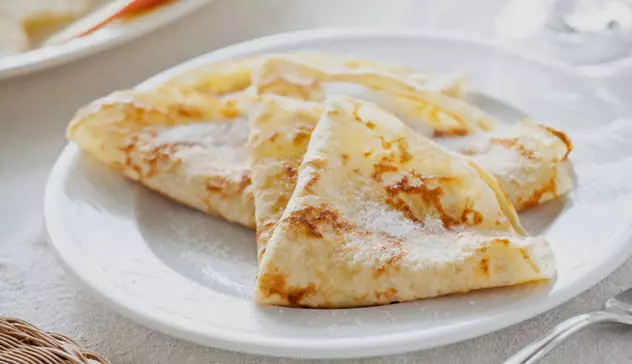
It seems that the pancakes were popular medieval sweet food. Medieval French pancakes were the most close to modern, but cakes, also called "pancakes", existed in England and Italy. The French recipe pancakes of 1393 can be found in the cookbook of Richard II. The English version was the dough from flour and egg proteins, which was rapid after cooling in Sahara. The end result was more like a donut.
8 compost
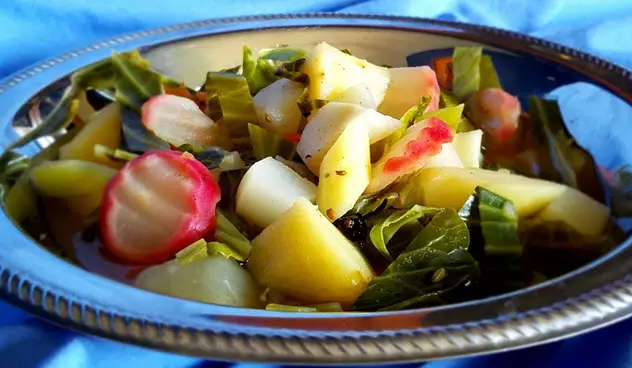
Recipe number 100 in "Food preparation methods" is called a compost, but then this word had a different meaning. In fact, it was a medieval equivalent of throwing all the remains of vegetables found in the kitchen in a slow cooker and extinguishing them on slow fire. It was probably the most closest to the peasant food of the royal cuisine, but with a much more frother sauce. This specific recipe required the roots of parsley, carrots, parsnaps, turnips, radish, cabbage and pear cut into cubes and cooked before softening. Then they sprinkled with salt and allowed to cool before putting in a large bowl with peppers, saffron and vinegar. The chef cooked wine and honey in a saucepan, after which the currants and spices were added to them. Vegetables watered this sauce.
9 Pain Fondue
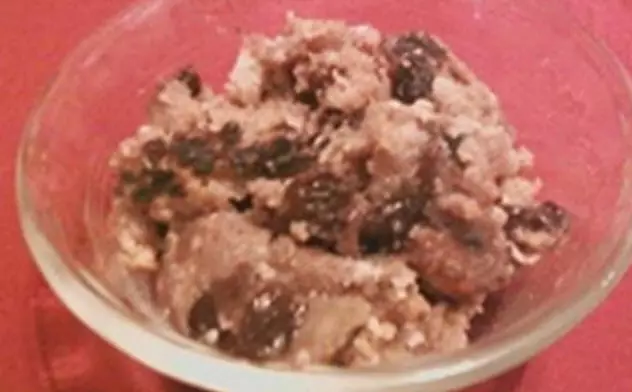
Bread pudding is a dessert that is usually eaten in the United Kingdom today. Most people know that this is an old dish, but few people know that it actually dates back to medieval times. Recipe number 59 in "Food preparation methods" is essentially an early version of the bread pudding. Bread fried in fat or oil. Then they did syrup as follows: the egg whites were whipped in red wine, adding raisins, honey, sugar, cinnamon, ginger and carnation and cooked it all on slow heat until the mixture thickens. After that, the bread was swallowed, put in syrup and allowed to be soaked. Before serving, pudding sprinkled with coriander and sugar.
10 almond milk rice
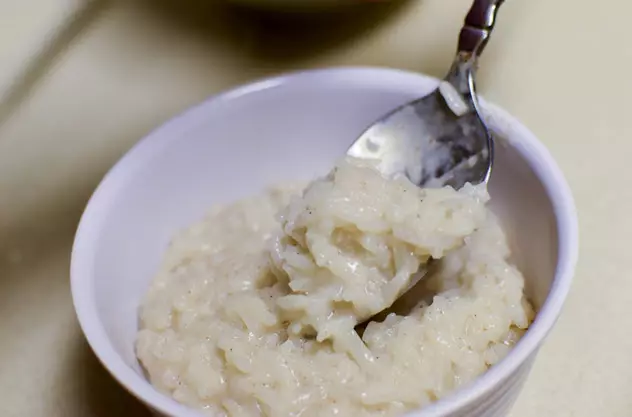
Medieval people loved to cook with almonds. Many recipes in the "ways of cooking food" contain almonds, so it is not surprising that the kings also rummed by almond milk. Rice in this recipe was brought from the other end of the world, so that only the richests could afford similar. At first they prepared rice, stacked and put in a saucepan. Then he was poured with almond milk and cooked for some time, after which honey and sugar were added and cooked until the entire mixture thicked up.
